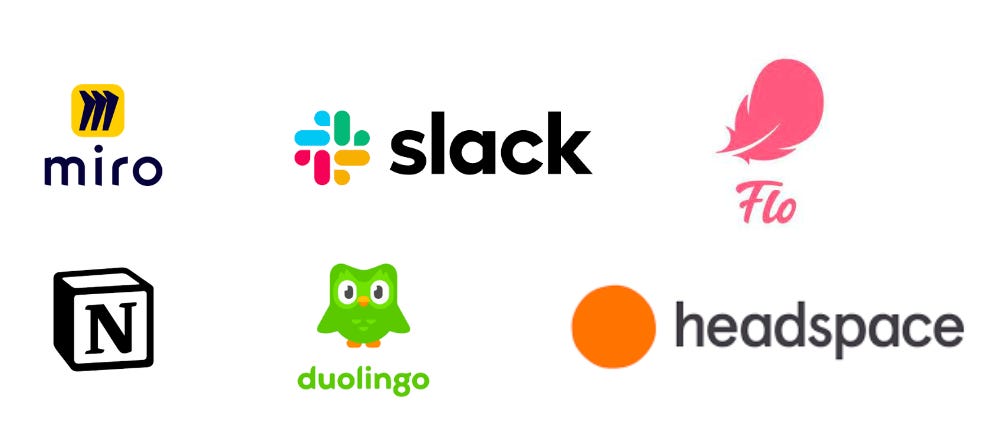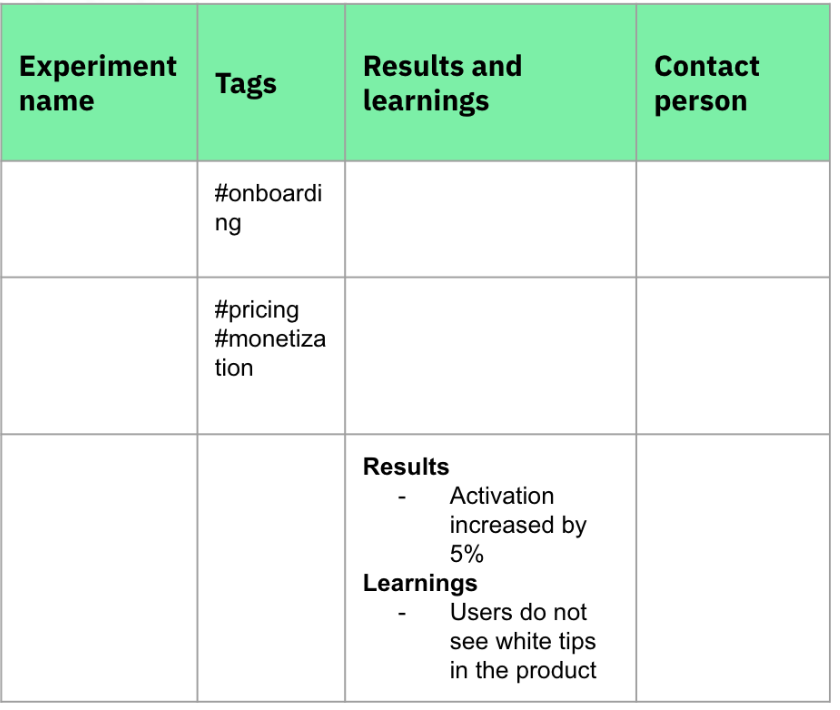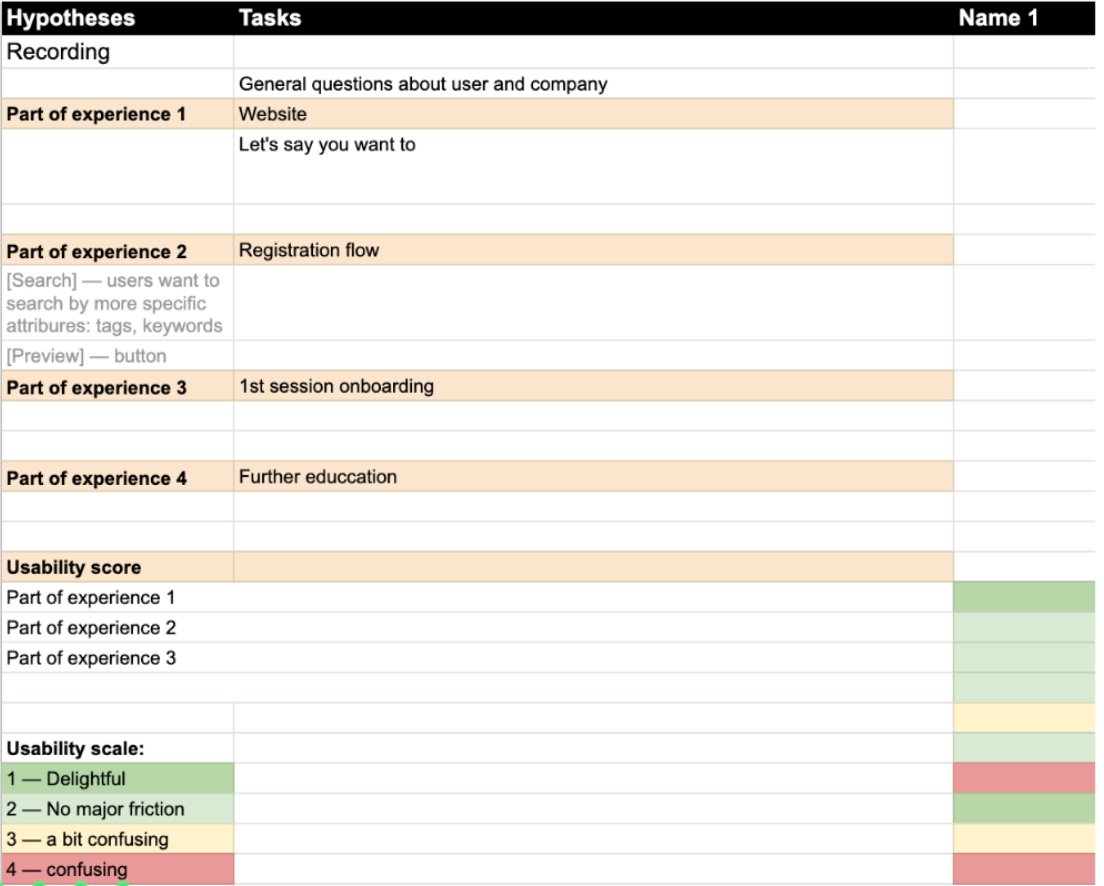10 Mistakes that prevent products from growing and solutions for them 🚀
Based on my experience with 20+ companies as a Growth Advisor and 5+ years at Miro.
Who Should Read This?
Companies in the scaling phase.
Founders & CEOs setting up Growth teams.
Product and Growth teams looking to expand their products.
Key Takeaways:
Recognize pitfalls that can hinder your product's rapid growth.
Explore potential solutions to these pitfalls.
Access five templates to boost your product growth.
Dive into real-life examples.
Plus, four bonus insights.
Mistake1. Your User Onboarding is not excellent
More about the problem:
Ignoring user goals
Only first session onboarding
No regular checks or market research
How to solve this problem?
Register in your product at least every week.
Check not only competitors but also different products with good UX.
Run usability tests of your onboarding experience regularly (monthly, at least 5 tests).
Use personalization to make onboarding user goal-centric.
Create tools for users for long-term and self-serve education.
Bonus: Products with the best onboarding experience to check
Mistake 2. You and your coworkers do not share insights across the company
More about the problem:
Repeated team mistakes.
Double work.
Limited user knowledge.
How to solve this problem?
Create a Slack channel to share insights.
Share insights about the processes, users, and data.
Tag those who can benefit from the insights.
Create experiments knowledge base.
Bonus: Experiment knowledge base template
Be sure to add not only data results but also user insights. Data shows what is happening but only users can say why this is happening!
Mistake 3. You are not great with user research
More about the problem:
No research at all.
Talk with users instead of research.
Irregular research.
There is no research on each step of development.
How to solve this problem?
User research should take part at the beginning, middle, and after the launch.
As a Product Manager, you shouldn’t delegate it to the UX research team if you have it.
Start with an analysis of gaps and then make small but systematic steps.
Make small but systematic steps to set up the research process:
No research → Start implementing regular research and fix the process
No research knowledge base → Gather all the previous research and create a structure
No research on all experimentation steps → Use 1 experiment to run research on all steps to see the benefits
Bonus - Usability Research Template:
Mistake 4. Poor understanding of where the product has growth opportunities
More about the problem:
Lack of good dashboards with metrics.
No knowledge about metrics benchmarks.
No clarity about the growth model.
How to solve this problem?
Create dashboards that will provide you with clear info on where you have bottlenecks in your growth funnel.
Learn the metrics’ benchmarks.
Visualize your growth model(s) and add metrics to them.
Where to get metrics benchmarks?
Just googling
Talk with PMs from other companies
Collect this info through your career journey
Public companies reporting
Check Lena’s Verna Substack
Mistake 5. Focus on feature creation, but forget about adoption and value delivery
More about the problem:
Orient on competitors too much
Do not track if the feature launch was successful and why
Do not invest in effective value delivery
How to solve this problem?
Product strategy should be your main orientation, but you shouldn’t change the plan whenever a competitor launches a new feature.
Feature launch is 20% about feature development and 80% about promotion, adoption, results analysis, and iteration.
Bonus: Product Strategy Template
Mission and Product Vision
Positioning and value.
Key metrics and Growth model.
CJM and main users’ problems
Strategy bets
Opportunities and initiatives
Mistake 6. No understanding that Growth is a complex system
More about the problem:
Lack of clarity and collaboration between teams
Contradictive OKRs
No clear growth model
How to solve this problem?
Keep teams aligned on driving common goals.
Always remember and use the guardrail metrics.
Visualize your growth model to understand how different parts affect each other.
Example of common goals:
Bad
The acquisition has a goal of new users. Activation has a goal of % activated users.
Good
Acquisition and Activation have a common goal of the number of activated users.
Bonus tip about guardrail metric
Always add the activation metric as a guardrail metric when running monetization and business model experiments!
Mistake 7. Poor pricing and packaging
More about the problem:
Not serving all customers
Unbalanced limits on the free plan
No clear difference in value between plans
No regular pricing updates
How to solve this problem?
Check your customer personas, update them yearly, and match plans for them.
Make smart limits on the free plan.
Review the pricing and business model regularly.
Example of fixing limits on a free plan for a B2B productivity tool:
Before:
Give a lot of features for free
Users have no incentives to pay
Low CR to pay
After
Used data to identify what features we place behind the paywall and validate new limits with users
Changed limits, keep the value, but limited
Increased CR to pay by 12%, no negative impact on activation in long-run
Mistake 8. Misalignment between Product, Marketing, and Sales
More about the problem:
No regular collaboration between the sales, product, and marketing teams
Different understanding of the product
No information and updates exchange
How to solve this problem?
Set up a process of collaboration and common goals.
Product strategy helps to align all the teams about the product.
Example of MVP collaboration between sales, marketing, and product for B2B SaaS:
Bi-weekly product demo for sales and marketing teams.
B2B sales-led growth - common metric goal for sales, marketing, and product team - activation metric.
Quarterly planning alignment.
Regular insights about users from sales - a great input for the product team, that you can use in prioritization
Mistake 9. No focused work on Growth
More about the problem:
No dedicated growth team
No time to work on growth because of bugs
Cannot have fast results so decided not to work on growth
How to solve this problem?
Have at least 1 dedicated person/small team.
Take care of quality and create a process of working with bugs so they do not make you forget about growth initiatives.
Remember that Growth is a lot about long-term investments.
Example of setting the growth team from 0 for B2B SaaS, analytics tool
Before:
No work on growth
Lots of great features but poor onboarding experience
After:
Hired 1 Product manager and provided him/her with 1 developer
Mapped out the growth model and identified the main opportunities
Aligned on quarterly goals and started to work
Improved onboarding and pricing that leads to an increase in revenue.
Bonus tip
The bugs process shouldn’t stop the growth
Think about the reasons for bugs with the whole team.
Fix the development quality first, so you fix all the bugs before the release.
Have a dedicated team member in each sprint focusing on bugs so it doesn’t affect the team plans.
Mistake 10. Incorrect value metric that you are charging users for
More about the problem:
Afraid to experiment with pricing
To complicated value metric
The value metric doesn’t represent the main value of the product and what users are paying for
How to solve this problem?
Run regular user research with your paying customers to understand what they are paying you for
Compare the user research results with data insights to have the final answer on the main value customers are paying you
Check the competitors' business model and value metrics
“What you’re charging for is more important than how much you charge”
Short Summary
Onboarding and monetization are the key user experience parts that you should focus on a lot.
Share knowledge across the company and run regular user research.
Identify growth opportunities with data and have a focused work on that.
Don’t become the feature factory - take care of adoption and be sure to provide the value.
Take care of proper team collaboration - inside growth and product, sales and marketing.
Grow your product and grow yourself 🚀 Subscribe to never miss my posts on product growth!





Thank you very much!